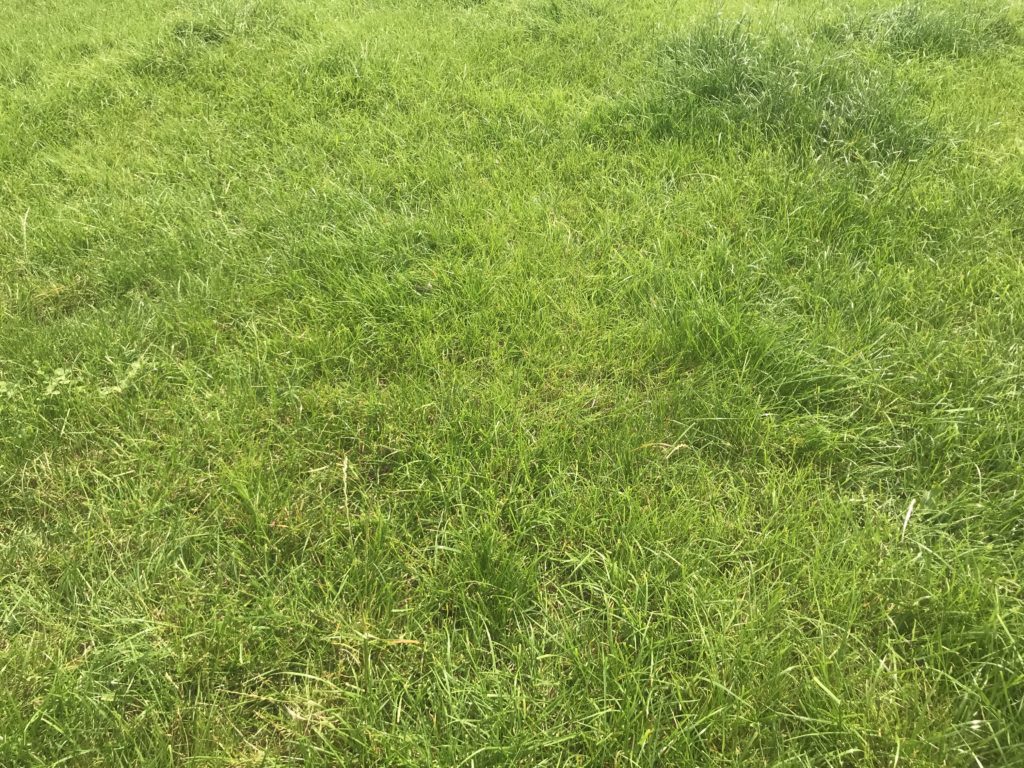The Irish Grassland Association (IGA) kicked off its dairy summer tour event on the Co. Kilkenny farm of Tom Walsh on Tuesday, July 19.
The IGA hosted a number events over two days as part of this year’s dairy event.
Farm overview
Tom, his wife Norma, and their children farm 64ha near Johnstown, Co. Kilkenny.
Having spent a number of years working away from the farm, Tom started farming full-time in 2003 milking 40 cows that year.
Since then, he has grown the herd to the 126 cows being milked this year on the 48ha milking platform at a stocking rate of 2.63cows/ha.
The remaining land area is used for rearing replacements and growing winter feed.
Tom has bred a high-milk-solids-herd producing, on average, over 600kg/cow/year. since milk quotas were removed in 2015 the herd has consistently produced over 500kg of milk solids.

Last year the herd supplied 640kg/cow (4.5% fat and 3.72% protein) to Glanbia.
This was produced from a diet of approximately 1.6t of concentrate/cow, high quality grazed grass and grass silage.
In 2021, Tom calved 86% of the herd in six weeks with a calving interval of 364 days. A herd EBI of €182, puts the herd in the top 10% of herds in the country.
Tom actively culls low-performing cows from his herd each year and this, coupled with breeding replacements from the best performing cows and excellent grazing management, underpins his continued improvement in milk solids production over the years.
Grass
Although 1.6t of concentrates is in the cows’ diet, grass is the key to Tom’s success, with the farm growing 15t of dry matter (DM) in 2021. From this 15t of DM grown, 13.5t was utilised.
At the IGA walk, Tom’s milk solids/cow/day was highlighted, with the herd well ahead of average. Tom’s cows are producing 2.3kg of milk solids/day, compared to the average of 1.6kg of milk solids/day.
This production is maintained during the summer months, with it being, on average, 0.5kg of milk solids/day ahead of the average herd.
This means at the end of the year the herd in 180kg of milk solids/cow better off than the average herd.
Grazing management
Grazing management was highlighted at the IGA event as being the key to maintaining this level of production during the peak months.
Many farms often struggle to maintain this, with cows often reaching peak and suddenly dropping off – however, this does not happen on Tom’s farm.

Tom maintains this production by focusing on grass. He said: “I’m different to many farmers, if grass is going back, I won’t graze high covers.
“I feed silage; I would rather cut out the high covers – if you go into high covers you take too much of a hit in production.
“It all about consistency in hitting the right covers, if you can hit the right covers it is easy to graze them out and hit residual.”
Tom stated his ideal pre-grazing yield is 1,450-1,500kg of DM/ha and that he will not graze covers heavier than 1,700kg of DM/ha. To maintain grass quality, Tom’s preferred option is mowing and bailing, but some pre-mowing is also done.
The pre-mowing is only done on paddocks that have the correct cover for grazing, but has become steamy or gone to seed.
Grass allocation
Many would look at Tom’s system and view the concentrate breeding rate as being the driver of production.
But Tom highlighted that grass is the most important feed on his farm.
He continued: “If I run out of meal over the weekend the cows will still milk the same, if I let them into a bad cover of grass they go back.
”Grass is the core of the system, the meal are sprinkles on top – if I get the grass wrong, it just doesn’t work.”
The herd consists of predominately Holstein genetics, with Tom noting the 1.3t of concentrates is what is needed to operate his system and the extra 300kg he feeds is drought related.
But what is also important to note is that Tom allocated 20kg of grass DM/head/day, which means that over the year, the cows eat and 1t extra of grass compared to the average.
This means that although Tom’s meal feeding seems high, in reality he feeds the same proportion of meal as the average farmer allocating 16kg of grass DM/head/day.

Breeding
Herd fertility performance is also excellent with a 365-day calving interval, a six-week calving rate of 86% and an empty rate of 8%.
Tom has all the cows calved in 11 weeks and four days, with dairy sires only used for the first three weeks of breeding.
Milk recording began on the farm in 2003 and Tom credits this for much of the breeding success. This has allowed him to breed from his best cows for a number of years and be selective from day one of breeding.

Tom has continuously removed poorer performing cows from the herd and bred from his best cows.
Cow selection was highlighted as being important on Tom’s farm, with only proven bulls being used.
“The cows are proven, their mothers and grandmother were proven so that is why I use proven bulls,” he said.
“The problem with genomic sires is they drop off and then so do the cows.”
Average herd economic breeding index (EBI) is €181, with Tom interestingly not breeding heifers or first calves to dairy artificial insemination (AI).
Tom says this is to ensure they do what they are meant to do before you breed a replacement from them.
IGA
Some of the key points that were taken away from the IGA farm walk by the crowd in attendance was that attention to detail is key.
Tom is constantly monitoring grass on the farm and making quick decisions.
He also focused on having the right cow for him; if a cow is not working in the system she is removed.
